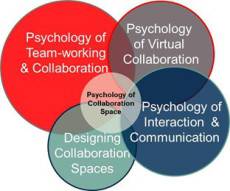August 28, 2013
Dull corporate offices with no “buzz” inhibit productivity, complain staff
Creating a dynamic and creative workplace is dependent on a number of factors; the office layout and design, the style of management and the wider company culture. Get these elements right and, says workplace consultants Morgan Lovell you hit the “Buzz Barometer” – a combination of a good atmosphere, energy and teamwork which encourages productivity and high levels of employee engagement. However, according to their recent research, three quarters (78 per cent) of employees say they would be significantly more productive if their workplace had more buzz. And worryingly for larger organisations, corporates are failing to match small company buzz, with four-fifths (81 per cent) saying SMEs offer a better working atmosphere than large companies.
























September 5, 2013
Open-plan office workers need time out from the madding crowd
by Sara Bean • Comment, Facilities management, Flexible working, Workplace design
Open-plan offices are now the most popular workplace layout, primarily because they save on space, enable flexible working and, it’s argued, foster better communication and collaboration between employees. Yet open-plan still has some way to go to convince occupants of its merits. According to a recent study published in the Journal of Environmental Psychology, of over 42,000 US office workers in 303 office buildings, workers in private offices remain the most satisfied with their surroundings. However, what constitutes a satisfactory workspace differed, according to the employee’s current office layout. So while noise was the most important consideration for open-plan workers, light and ease of interaction topped the satisfaction list for those housed in cellular offices. (more…)